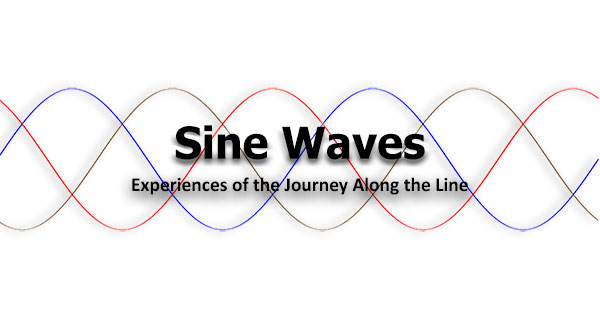In the early 1970’s, up in British Columbia, the linemen had been using early version bucket and boom trucks. Distribution crews were working off poles with lift sticks, hot stick trailers and baker boards.
If someone were to tell me that you would be needing typing, communication and critical thinking skills back then, I would have clanged them with a goat wrench! Large paper one-line drawings for circuitry and patrol maps were difficult to handle, read at night and to store on the trucks. Night work was a struggle, navigating damage while holding hand lights out the windows. Rain gear made us feel like a bag full of wet mice. Radio communications were difficult with poor transmission sites for vhf radios. In mountainous terrain there were little to no contact with crews. Control and trouble centers were easily overwhelmed since restoration counted on radio communications. It was like the old guys standing up on the roof adjusting the tv aerials!
Hydraulic technologies were just coming into their own and subject to huge costs. Crews often relied upon physically difficult tools. These old tools worked but added time to the tasks and increased the chances of strain injuries. Testing and grounding equipment were nothing like they are nowadays, and proper training was in the early stages of development.
The line trade was never short of resourcefulness or creativity. Overcoming adversity and perseverance was the main skill for the linemen and eventually women.
Fast forward to the 80’s there were enhancements and developments in vehicle, crane and boom technologies. Aerial lift equipment was improving rapidly. Advancements in hydraulic technologies brought about new methods and practices in overhead and underground work. The skills to operate and understand safe use of these types of new, as well as older, tools created a need for a higher level of training requirements. Testing, grounding and troubleshooting equipment was improving, as more utilities shared information. Improvements in computer and phone technologies led to better, more efficient communications. However, these changes necessitated new skillsets, unfamiliar to many.
Utility customer service requirements were also evolving. As the technological advancements improved, the reliance on their availability created a huge requirement to report quicker, bill faster and estimate restoration times quicker. Scheduling and delivering more overhead and underground plant developments to meet demand, spurred the need for better communications with line-crew leaders and operations.
Computer technologies both on the vehicles and off sprang up like daffodils. Mobile laptop dispatching called mobile data systems were arriving. If a lineman thought writing out timesheets was tough, you can just imagine their frustration with these new onboard systems. Throughout the field, there were improvements in work methods and standards (i.e. gear, mapping, vehicle design, tools, practices, etc.).
Transmission work and construction of mega projects were wrapped up for a couple of decades up in the Pacific Northwest. Training departments were sharing knowledge and programs to save costs of development. International storm responses caused many opportunities to compare notes in the line trade. Good ideas flowed up and down the western seaboard. The Northwest Training Alliance was created to address standards, programs and training developments. Safety was improving and so was line equipment designs. The teamwork between utilities was respectful and good for all the customers. Invention of quick automatic sleeves and shrink sleeve technologies began entering the wet environment.
The 90’s brought competition between utilities for network power sales and hindered sharing programs. The impact of these money policies was felt in the line trade as budgets shrank. Plastics were improving and battery technologies were being created for better more mobile tools. Ergonomics were being used to influence tool design. Safety improved in many ways but suffered in others.
In transmission, barehand for Ultra High Voltage procedures were being created with Helicopter platform and longline landings. Live-line buggy designs improved as did motorized wire travel. Battery operated impact drills helped for spacer changes. Super cranes, boom mounted live line platforms, baskets and dielectric testing improved. Remote sleeve detonation for dead-ending and aerial splicing led to improved safety. Better ground monitoring, testing and equipotential bonding equipment that was lighter and more efficient became readily available.
The Y2K was a fizzle but technologies in line work continued to improve. Smart meters, cell site designs and communications equipment went digital. 5G networks and digitizing electrical geophysical mapping and spatial asset management systems arrived. These advances had an enormous impact on troubleshooting and switching procedures. Gang-Operated Overhead Load-break switches improved. Underground Switch cabinets and SF6 breakers made life simpler to operate but more complicated to install. Supervisory control over overhead motor operated switches took linemen to the technician levels. Reclosers and real time metering with WIFI collection is taking line operations to another level. Online timesheets, dispatching, switching, and emergency response required completely different skill sets than the line gang climbing and setting crews.
One day, I woke up and the line trade world and its’ technologies were so different I asked myself how we made it through. The answer was, we are resourceful, adaptable, courageous, strong, and have embraced change. Linemen can figure out a way to overcome any obstacle. If there is a will, there is a way.
Bruce Masse – Trouble Technician

